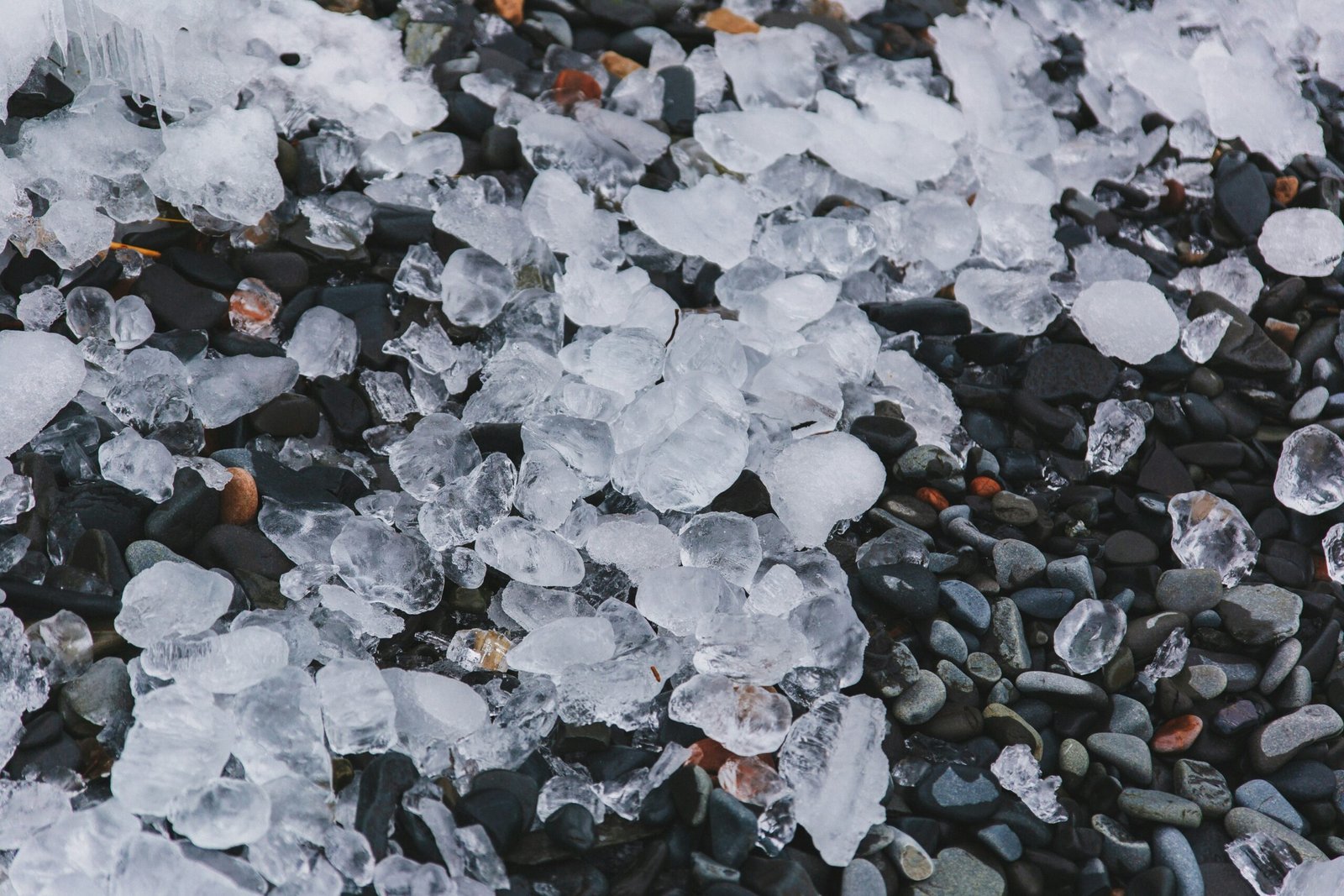
Photo by <a href="https://unsplash.com/@cangus87" rel="nofollow">Cody A</a> on <a href="https://unsplash.com/?utm_source=hostinger&utm_medium=referral" rel="nofollow">Unsplash</a>
Understanding Hail: Composition and Formation
Hail is a fascinating meteorological phenomenon that occurs during severe thunderstorms. It is a type of frozen precipitation that falls from the sky in the form of ice pellets. Hailstones can vary in size, ranging from small pebbles to large golf balls or even larger. To understand hail better, let’s delve into its composition and how it forms.
Composition of Hailstones
Hailstones are primarily composed of ice, but their structure is more complex than just frozen water. As a hailstone is formed, it undergoes multiple cycles of freezing and melting, resulting in layers of ice. These layers are responsible for the unique structure and appearance of hailstones.
Inside a hailstone, you can find concentric rings or layers, similar to the rings of a tree. Each layer represents a cycle of freezing and melting. The outermost layer is typically the largest and consists of clear ice. As you move towards the center of the hailstone, the layers become more opaque and may contain air bubbles or even small pieces of ice.
In addition to ice, hailstones may also contain other particles, such as dust or dirt. These particles can become trapped within the layers as the hailstone forms, giving it a cloudy or dirty appearance.
Formation of Hail
Hail forms within severe thunderstorms that have strong updrafts. Updrafts are powerful upward currents of air that carry water droplets high into the storm cloud, where temperatures are below freezing.
As the water droplets are lifted higher into the cloud, they freeze into ice pellets. These ice pellets are then carried by the updrafts back into the upper regions of the cloud, where they encounter supercooled water. Supercooled water is water that remains in liquid form despite being below the freezing point.
When the ice pellets come into contact with the supercooled water, a process called accretion occurs. Accretion is the process of the ice pellets collecting layers of supercooled water, which freezes upon contact. This freezing process adds another layer to the growing hailstone.
The hailstone continues to be carried by the updrafts, repeatedly encountering supercooled water and accreting more layers of ice. This process can continue until the hailstone becomes too heavy for the updrafts to support, causing it to fall to the ground.
The Dangers of Hail
Hail can pose various dangers, especially during severe storms. The size and velocity of hailstones can cause significant damage to buildings, vehicles, crops, and even pose a risk to humans and animals.
Large hailstones falling from great heights can reach the ground with considerable force, potentially causing injury or property damage. The impact of hail can shatter windows, dent vehicles, and damage roofs. In agricultural areas, hailstorms can devastate crops, leading to significant economic losses for farmers.
It is crucial to stay indoors and seek shelter during hailstorms to avoid any potential harm. If you are caught outside during a hailstorm, find a sturdy shelter or use protective coverings to shield yourself from the impact of the hailstones.
In Conclusion
Hail is a captivating weather phenomenon that occurs during severe thunderstorms. Its composition consists of layers of frozen water, formed through a process of freezing and melting. Hailstones can vary in size and may contain other particles such as dust. Understanding the formation and dangers of hail can help us appreciate its power and take necessary precautions during severe weather events.






